Jenine Abboushi
Popular notions of topographical rivalries between mountain and sea, city and country, I have always found wanting. Missing are desertic landscapes, which speak to me. And I sometimes wonder whether I inherited this desert affinity from earlier generations — in a manner akin to other psycho-emotional terrains that we may epigenetically inherit, like trauma, as scientists tell us, or like the inheritance of loss, as Kiran Desai poetically imagines it. Perhaps I need not trace my desert longing to Yemen, where some of our family elders, on my Palestinian father’s side, locate our origins, relating tales of drought and migration to Palestine and Lebanon over 450 years ago. And for those of us who have lived through the searing modern histories of the Middle East and Maghreb, these desertscapes hardly signify desolation. In all their elemental beauty, they prove to be precious realms — intimating longevity and lending depth to our presence, to our sense of belonging to these ancient lands.
And yet we have become, in a sense, “manufacturers of desert,” as Lebanese singer of Palestine, Marcel Khalife, once wryly remarked to a friend, referring to the material ravages of corruption and development all around us. Jordan is the second driest country on earth, set to purchase water from Israel (ironic, since the latter has been stealing water from the Jordan River for decades), and to tap into German cloud ionization technology, which should cause it to “rain” in parts of the country. So naturally we did not expect torrential rain during a family trip we took, the day after Christmas, to Wadi Feynan, where we stayed the night at the Ecolodge — a project of Nabil Tarazi (my Friends School classmate from Ramallah, who was there visiting his mother at the time of our visit). It rained so hard, all the way from Amman, along the coast of the Dead Sea, past its thin Strait (offering moving vistas of Palestine), and heading east towards Wadi Feynan, that we were reminded that Jordan lies in West Asia, where rains of a tropical force, in earlier epochs, more regularly poured from the skies in cascades, soaking the land deeply.
There were once forests here in Wadi Feynan, archeologists confirm. But the trees were burned at 1,200 degrees by the Romans to fuel the smelting process of the copper mines they exploited, and before them the Nabateans, reaching back to the Chalcolithic Age between 4500 and 3,100 BC.
The forests did not grow back.
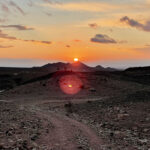
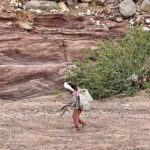
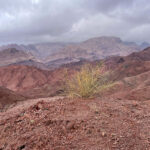
Today, the Jordanian monarchy is keen to recommence copper mining at Wadi Feynan, part of the Dana Biosphere, the country’s (and region’s) natural crown jewel, a UNESCO heritage site that hosts rare native wildlife, flora, and fauna. In 1966, businessman and environmentalist Anis Mouasher founded the Royal Society for the Conservation of Nature, which was later chosen by the government to care for the Dana Reserve, established in 1989. A new generation of conservationists in Jordan and beyond, concerned about the renewed interest of big business in copper mining, intend to defend this Reserve. A proposed mining project licensed to Manaseer company (which produces gas, petrol, cement, fertilizers, and chemicals), is still at the research and excavating stage in the next two years. The founder and chairman of this company — a businessman who is not an environmentalist — is Ziyad Manasir, a Jordanian-Russian billionaire. Manasir’s other company is a Russian construction firm with close ties to Gazprom, which was sanctioned by the European Union over Russia’s war on Ukraine.
Manasir intends to prove the viability and profitability of copper mining at Wadi Feynan, and he has the monarchy’s ear. Jordan wants to increase revenue by diversifying from tourism, its main industry, which seems like a good idea on the face of it. The financial profitability of copper mining, however, has been periodically studied over the years, and each time it was deemed economically unworkable. The problems with such a project are manifold: the Dana Biosphere, including Wadi Feynan, important to Jordan’s tourism, would be polluted and even destroyed; copper mines necessitate more water than available in the entire Tifalah region of Jordan (and the idea of desalinating and transporting water from Aqaba would be far too costly); only a tiny percent, 1-3%, of the earth in this area contains copper deposits, and extracting them produces significant pollution, with mountains of burned slag to manage. Promises by Manaseer of billions in profit, as well as profitable employment for the Bedouin tribes of the region — company representatives are making the rounds to enlist their support — all seem shady.
This parched country produces little for export, imports much of what it needs, and yet possesses natural bounty and historical sites that yearly attract significant numbers of visitors, film crews, and naturalists. If this copper mining project is implemented, it would likely be yet another failure born of purblind greed and unregulated stupidity — the same kind that continues to strew carcasses and devastation over the entire region. Indeed, each one of us from this region is already haunted by visions of pollution (waking up bewildered, in a moving car in southern Morocco, to fields of weird crops, which upon examination prove to be hundreds of black plastic bags caught from the winds by chunks of tilled soil); of extraction (the ghastly sight of severed, gouged out hills in Jenin’s village of Baytqad, the work of a corrupt relative who sold not the land but the earth itself, in giant mounds, carted away by trucks); and of bankrupt structures (like Saad Hariri’s vast, glass building, almost immediately left hollow after construction, in the once elegant Madame Curie neighborhood of Beirut).
The Wadi Feynan ecolodge is admirably integrated into the environment, affording visitors connections with its surroundings and the Bedouin peoples who live here —settled for now with nearby schooling — and who run the lodge as well as its agricultural and environmental projects. The ecolodge has lovely courtyards and staircases open to the skies. When we arrived, the staff was trying to manage the growing puddles. But there were two roaring fires burning cakes of dried goat dung that emit no fumes, and we gathered around one of them in the family room, played board games, drank tea, talked, laughed, and then wanted to venture out and explore, despite the rain. One manager, Amin, asked if we would like to go and have coffee with his family a short distance away. We walked through the rain to the family bayt shaar, a tent of camelhair (its threads expand in the rain, making it mostly impermeable). On the way, we imagined the drops pounding down on us would each measure at least a centimeter in diameter. We were served coffee of a divine aroma, the beans grilled on the fire in a skillet, the coffee roasted in a pot, placed directly on the embers, and, once ready, lifted by Amin, who expertly threaded a stick through a wire handle. He explained coffee rituals and protocols in this society, important when resolving disputes and arranging marriages. But mostly we talked of the rain, and Amin said they had had none at all for three years, and no rain so bountiful for nearly seven. We attempted to converse with the shy children, and then took our leave to make our way back to the ecolodge.
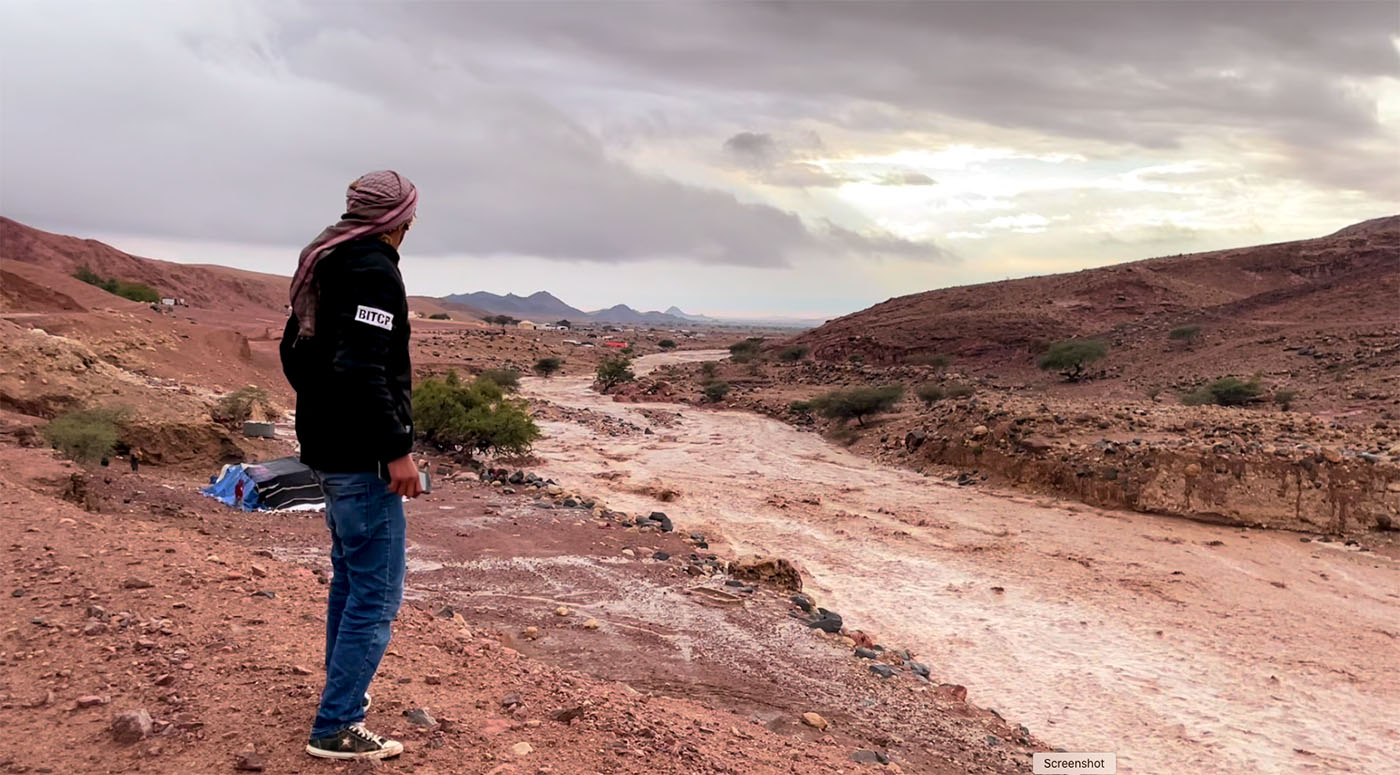
The rain had largely stopped, and as we approached the side of the wadi (valley), we were stunned to discover a wide, roaring river cascading from far behind the lodge and rolling in the direction of the Dead Sea. The wadi was dry when we had entered the tent less than an hour earlier! Members of another Bedouin family, just at the water’s edge, were jumping, pointing, exclaiming, laughing, and Amin and his family joined in the euphoria. All congregated in astonishment to see the miracle river that had formed during the time it took us all to drink coffee. Amin called out to the family on the lower level to move upland immediately, as we saw the banks in certain parts already caving into the river. They did not heed his warnings, magnetically drawn to the Biblical deluge before them, and luckily no one was swept away by collapsing banks.
It reminded me of accounts of Palestinian and Syrian families gathering at the windows of their homes, palms on panes, tracing with wide eyes Israeli rockets launched from the sky (or, in Syria, the regime’s rockets), transfixed, at great peril, by the fiery projectiles whizzing through the sky. They would not unstick themselves until, in one case in Damascus, a rocket hit a neighbor’s garage next door, blowing them all backwards across the living room, glass everywhere (remarkably, no one was injured in that instance).
I have only read about these miraculous flash floods in history, and of course in the Bible, with God’s promise that never again will the Earth be filled with water. Indeed, the Earth generally grows drier as it warms and melts, which increases drought, another form of devastation.
Flash floods are awe-inspiring happenings — poetic, thrilling, perilous. I thought of the Russo-Swiss-French writer, journalist, and explorer Isabelle Eberhardt, of her lyrical accounts of Algeria and her experiences, and she regularly contributed in Arabic for a leading Algiers daily. At the age of 27, she, her dwelling, and many of her writings were taken by a flash flood in Aïn Safra in 1904. And in Jordan more recently and tragically, 18 children and their teachers drowned in a flash flood in 2018, in a school bus taking them on a field trip. So now the government shuts down the country when there is flooding.
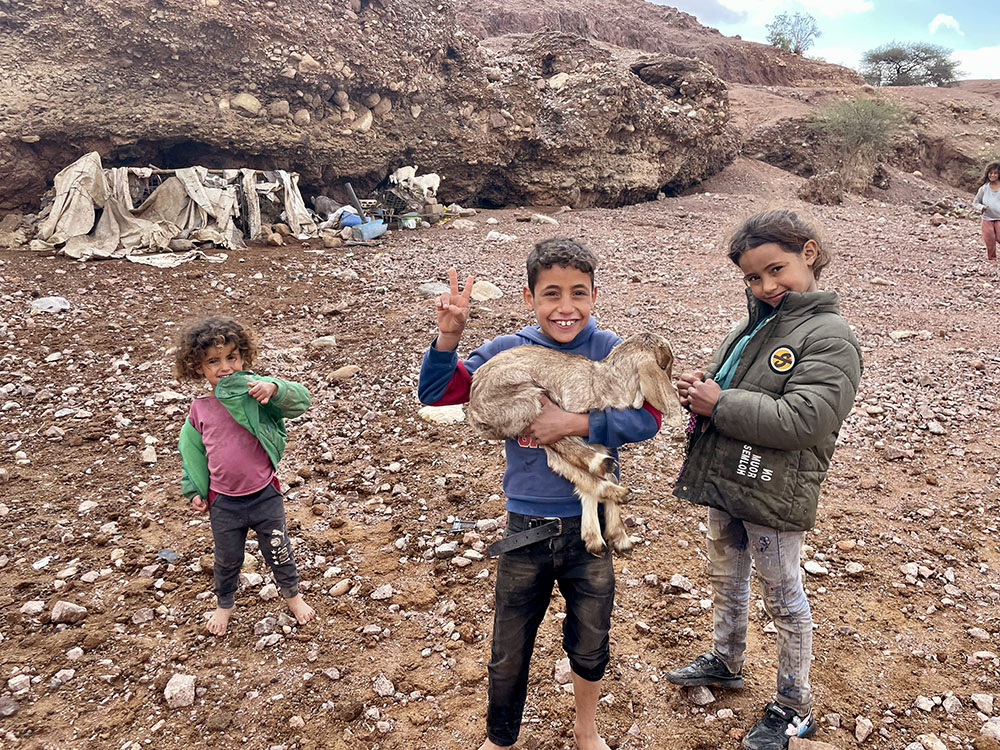
And yet…we were moved by this miracle deluge for the water it brings. “Your faces have brought us this baraka,” this blessing, several ecolodge staff members exclaimed, when we greeted them. In the hours that followed, they shared real-time news and videos of the river’s activity. As in all exceptional happenings, everyone talks to everyone else and connections are forged between strangers who, on the face of it, may have little in common. We ventured out from the lodge a few hours later for a sunset walk through the mountains, tinged with wine, pistachio, and charcoal hues. And we witnessed a second miraculous event: the river had disappeared with no trace. It was not simply absorbed by the earth, but it rushed away. (Indeed, we now could believe that Moses literally parted the waters at God’s command: “Stretch out thine hand over the sea and divide it.”)
Our guides pointed out how the tiny-pebbled earth beneath our feet ensured that we could walk on with no muddiness. The river had rolled on and away. “But where is all the water?” we asked over and again, stupidly not hearing replies. We were as astonished by the river’s sudden disappearance as we had been earlier that afternoon when it first appeared, wide and deep. As it happens, a new dam, four kilometers due west, located just before the banks of the Dead Sea and under construction for four years, had gone operational a few months earlier. Real-time photos flowed in of the river’s progression, and a final video showed a grand lake at the Wadi Fidan Dam — an unimaginably bountiful body of water for this arid land and needful peoples. This promised renewal and verdure, including more medicinal plants, in a few weeks.
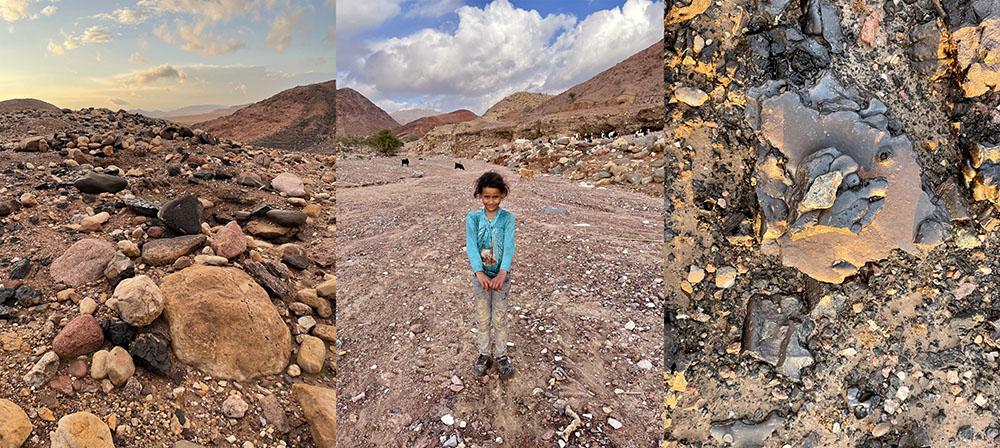
Rescue teams with bulldozers prioritized releasing tourists stranded in Petra, after which they would open our road to the Dead Sea. Several guests set off to walk towards Dana. As there was a 10-meter drop in the road, driving out was not possible. Some of us took another walk, on which we discovered mountain trees and shrubbery. One plant the Bedouin communities use as soap (its leaves sud up when rubbed with water). Later I took a final walk alone to visit a family from the Azazmeh tribe, whose children told me that they, like me, are Palestinians, from Bir Essabaa (their forefathers were expelled by the Israelis in 1948). When the main road was finally clear, my family called to me, ending my visit, and we drove back to the banks of the Dead Sea, just before sunset.
Twilight ever hovers over our most beautiful landscapes. We are painfully aware that we may not see them again, or that we will not be able to recognize them due to the twisted transformations that ruthless development often produces. Natural mahmiyyehs (protected reserves) are never really protected if these lands are coveted by billionaires intent on becoming even richer. Dana Biosphere is home to the most diverse concentration of life in the region, its 320 square kilometers of land lying at a crossroads of four bio-geographical worlds: Mediterranean, Irano-Turanian, Saharo-Arabian, and Sudanian. And Wadi Feynan is possibly the most ancient site of human habitation. Here may we dwell and thrive, always.



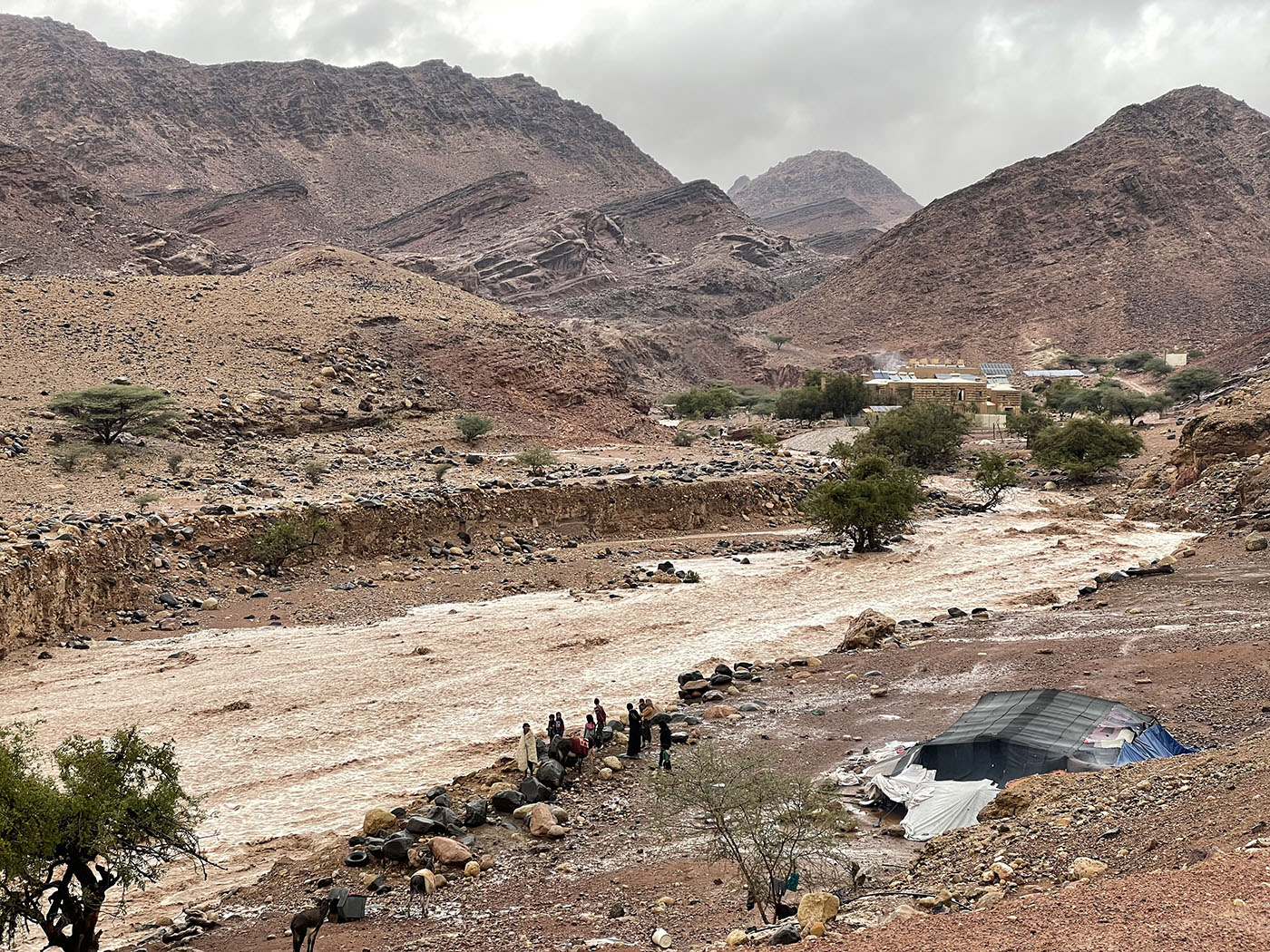

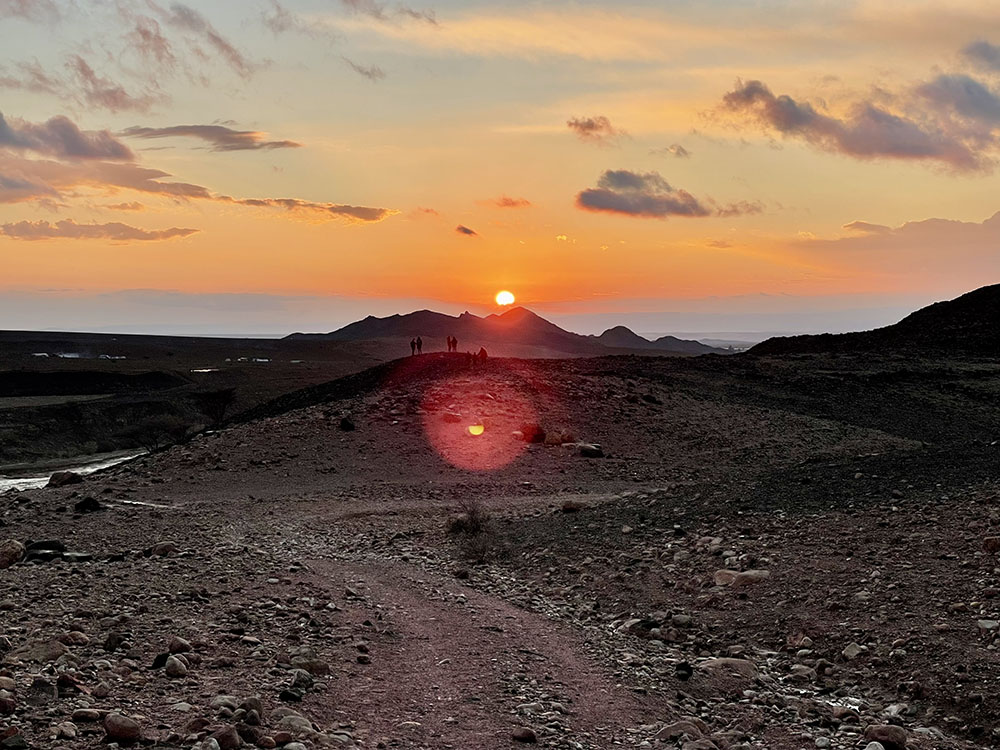
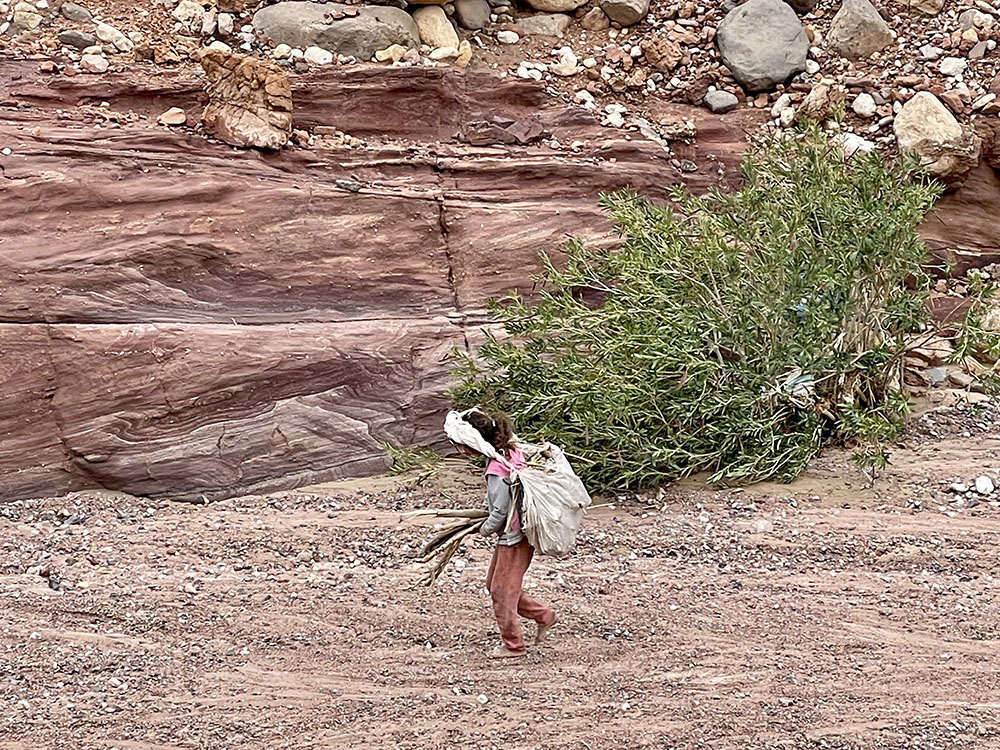
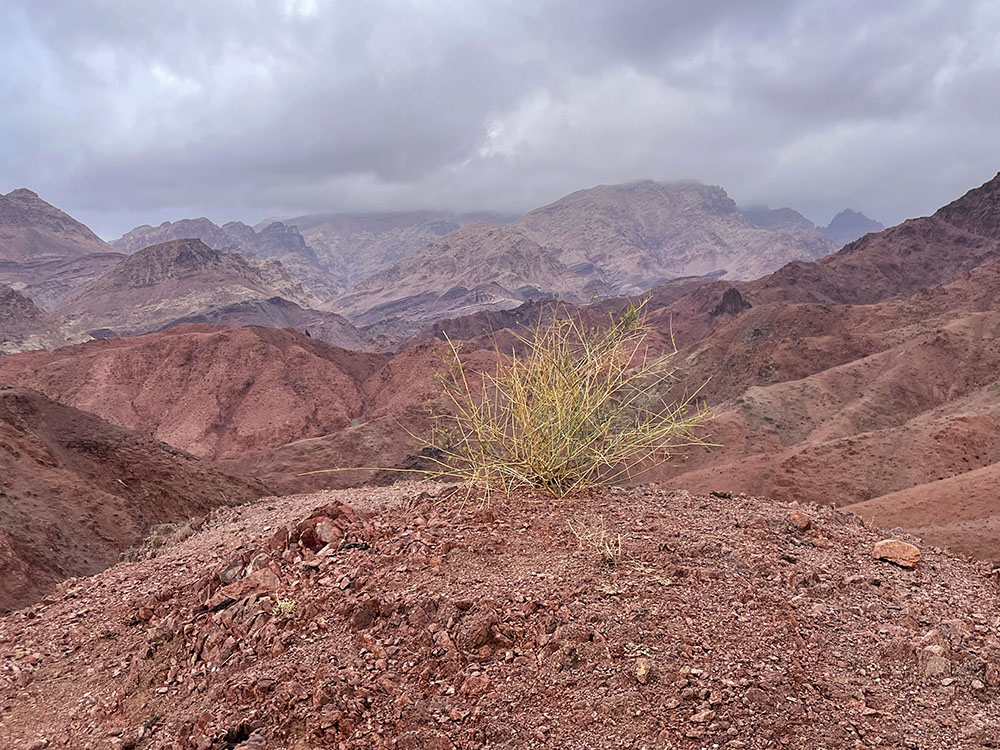
Jenine Abboushi, you have an ability to seamlessly weave together many threads to create an impactful piece. Enjoyed reading this and imagining the different landscapes, historical periods and political-economic realities on the ground.
Wow. First of all, what an amazing experience. Secondly, the writing is captivating and incredibly realistic. I felt I was there! A well written and well timed article. Thank you, Jenine.
Beautiful essay! It flows just like the stream that appeared and then disappeared!
Reading your article made me feel the beauty of the unseen. Thank you for the amazing article. Once I visit I shall see it the way your pen flowed with your vision.